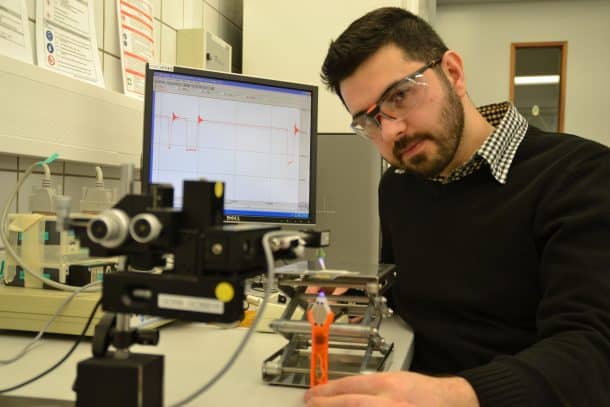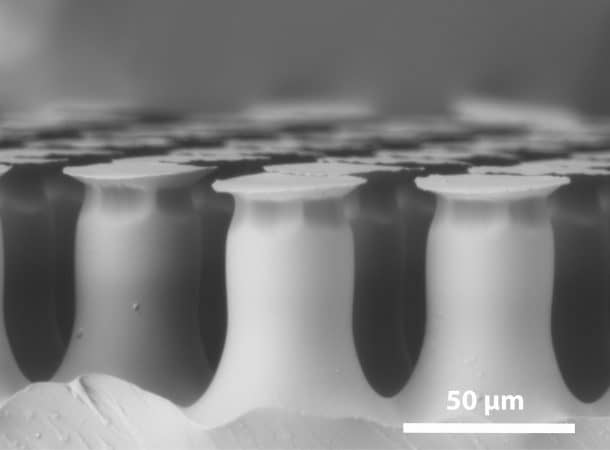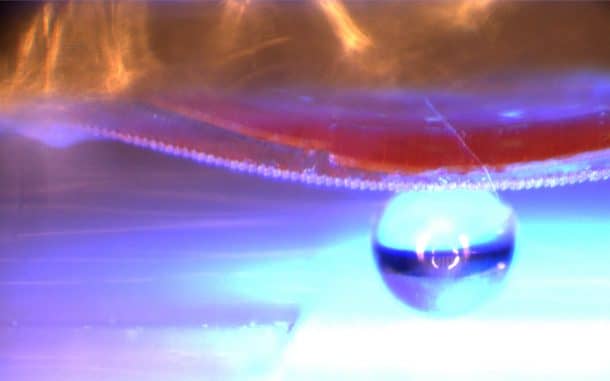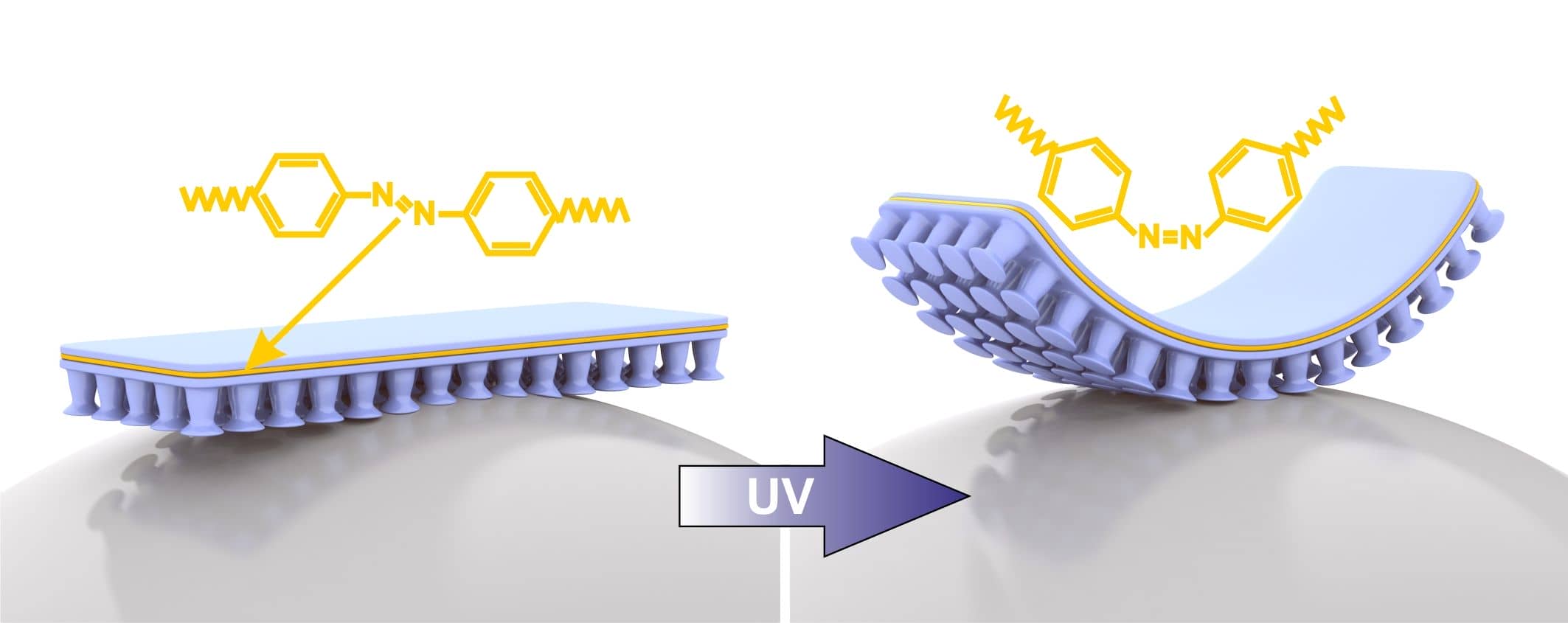Geckos have an incredible ability to stick to vertical surfaces and scientists are trying to replicate this ability in synthetic materials. Researchers from the Kiel University in Germany have developed such a material with light actuated grippers, and the robots of the future may be equipped with the gecko-like ability to crawl up and down walls.
The research group led by a biologist Emre Kizilkan picked the idea from the lizard and developed a multi-layered substance that can switch from nonadhesive state to an adhesive state with the flash of ultraviolet light. The team aims to create a device to emulate the crawling ability of the reptile to move on almost any kind of surface in any direction.

Source: Kiel University
Unlike other many other reptiles, the gecko does not rely on sticky secretions of suction cups for their sticking powers. The spatula-shaped nanostructures on the foot pad of the geckos impart them the ability to crawl upside down on horizontal surfaces. The reptile’s leg movements impart a sheer force to the nanofibers, and they switch between sticky and nonsticky states with a muscle twitch. The nanofiber equipped gecko sticks to surfaces into the microscopic imperfections with an undoubted assistance from Van Der Walls forces.
The Van Der Walls forces are fairly weak forces compared to the covalent and ionic bonds that keep atoms and molecules together, but the animal makes use of these forces with thousands of tiny fibers. A professor of mechanical engineering at the Oregon state University, P. Alex Greany says, “Van der Waals forces are the weakest sort of interatomic forces that we have. It’s amazing that geckos are able to use this really weak force.”
Kizilkan’s research published in the journal Science Robotics represents the “bioinspired photocontrollable microstructured transport device,” or BIPMTD and the paper reads:
“The stimulus enabling surfaces to switch from an adhesive to a non-adhesive state or vice versa can be mechanical, magnetic, or thermal. Besides these, light is a stimulus that can be controlled very quickly and precisely […] a very attractive stimulus for developing bioinspired photoresponsive reversible adhesive systems.”
The BIPMTD replicates the multilayered structure of the gecko’s foot. Mushroom-shaped adhesive microstructures embedded in polydimethylsiloxane form the top sticky layer. The second layer of liquid crystals containing azobenzene controls the adhesive layer as azobenzene responds to light. This liquid crystal layer is sealed from beneath by another coat of polydimethylsiloxane.

Source: Kiel University
When UV light is applied, it alters the molecular size of azobenzene, changing the curve of the material causing it peel away from the surface. When the UV light source is switched off, the crystals gain back their original form making the material sticky again. A series of tests showed the material pick-up, move and release objects like glass slide, sphere, and a plastic Eppendorf tube.

Source: Kiel University
The applications of the material can be increased many folds using by tuning it to respond differently to varying levels of UV intensity. Do you want robots crawling up to the roof of your room? Probably not. But as it becomes possible, scientists will explore the possibilities the material has to offer.
Source: Kiel University


